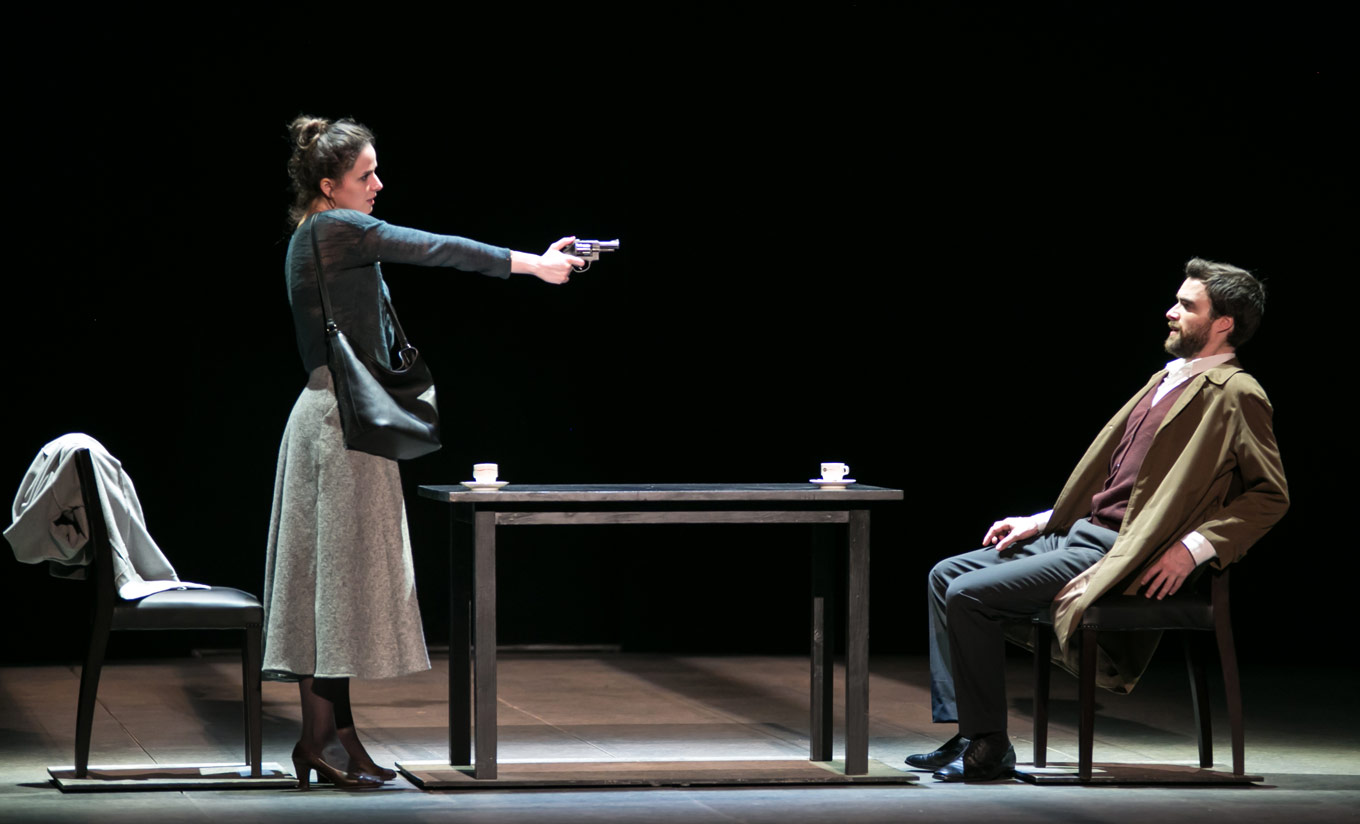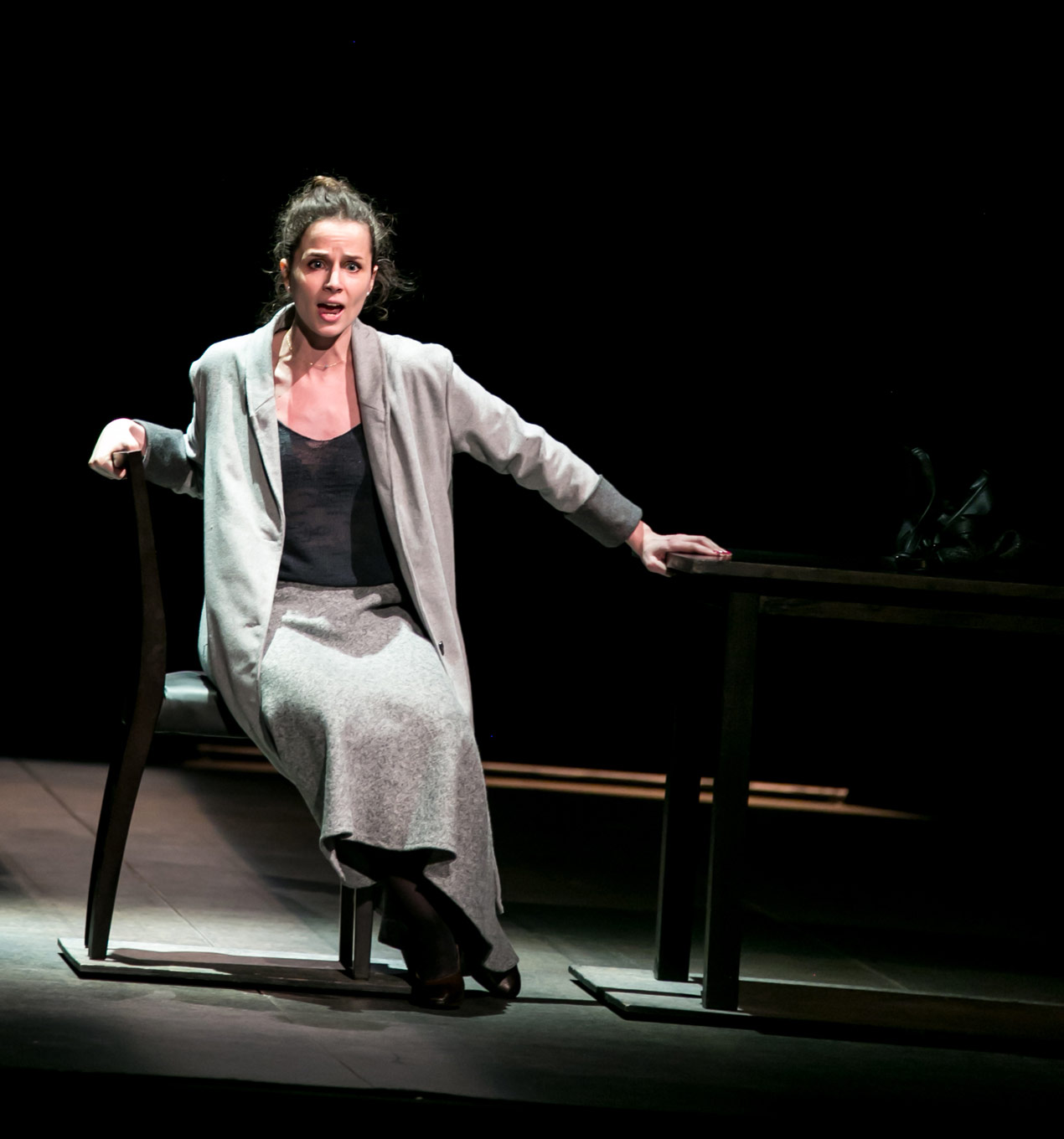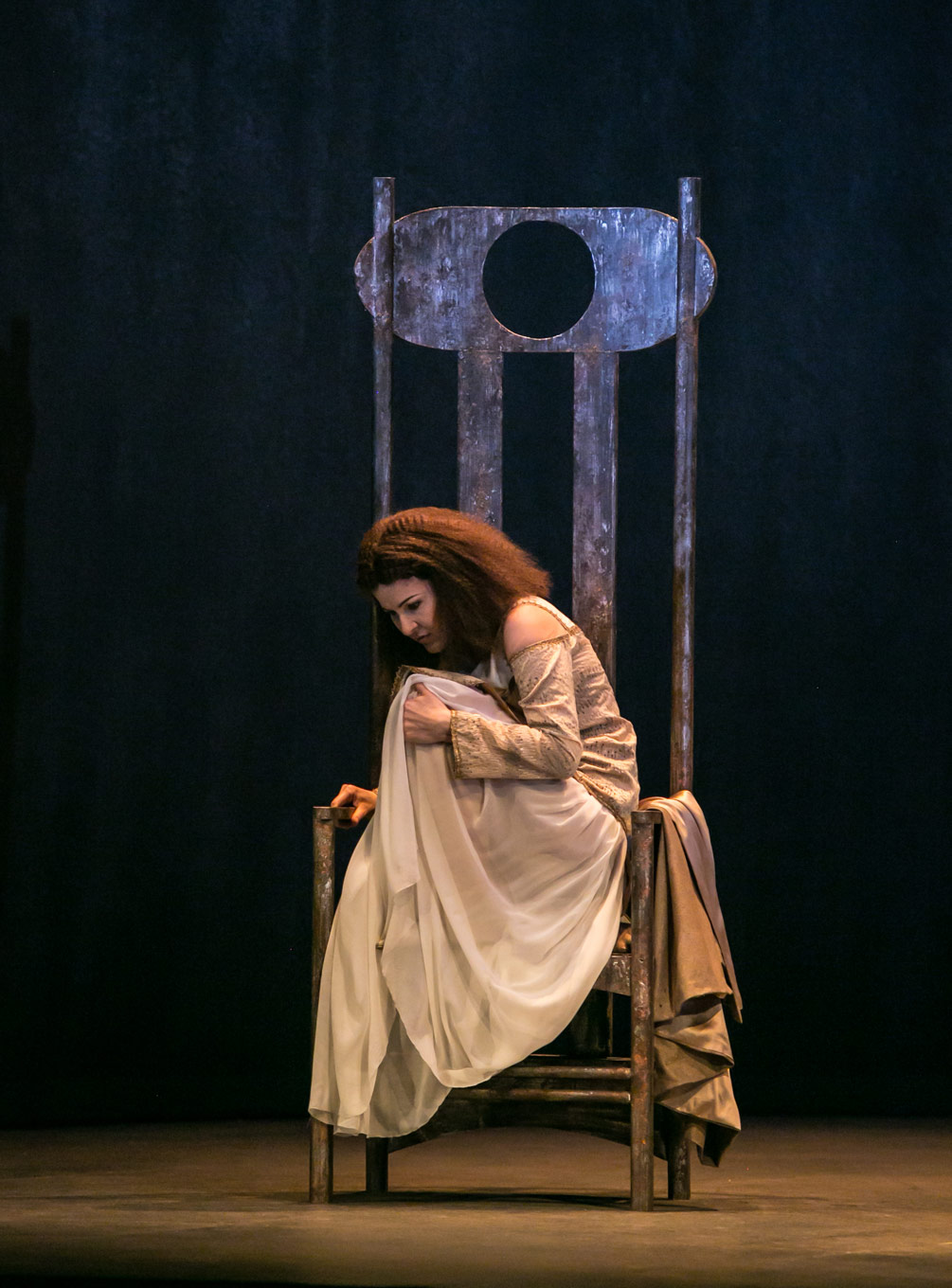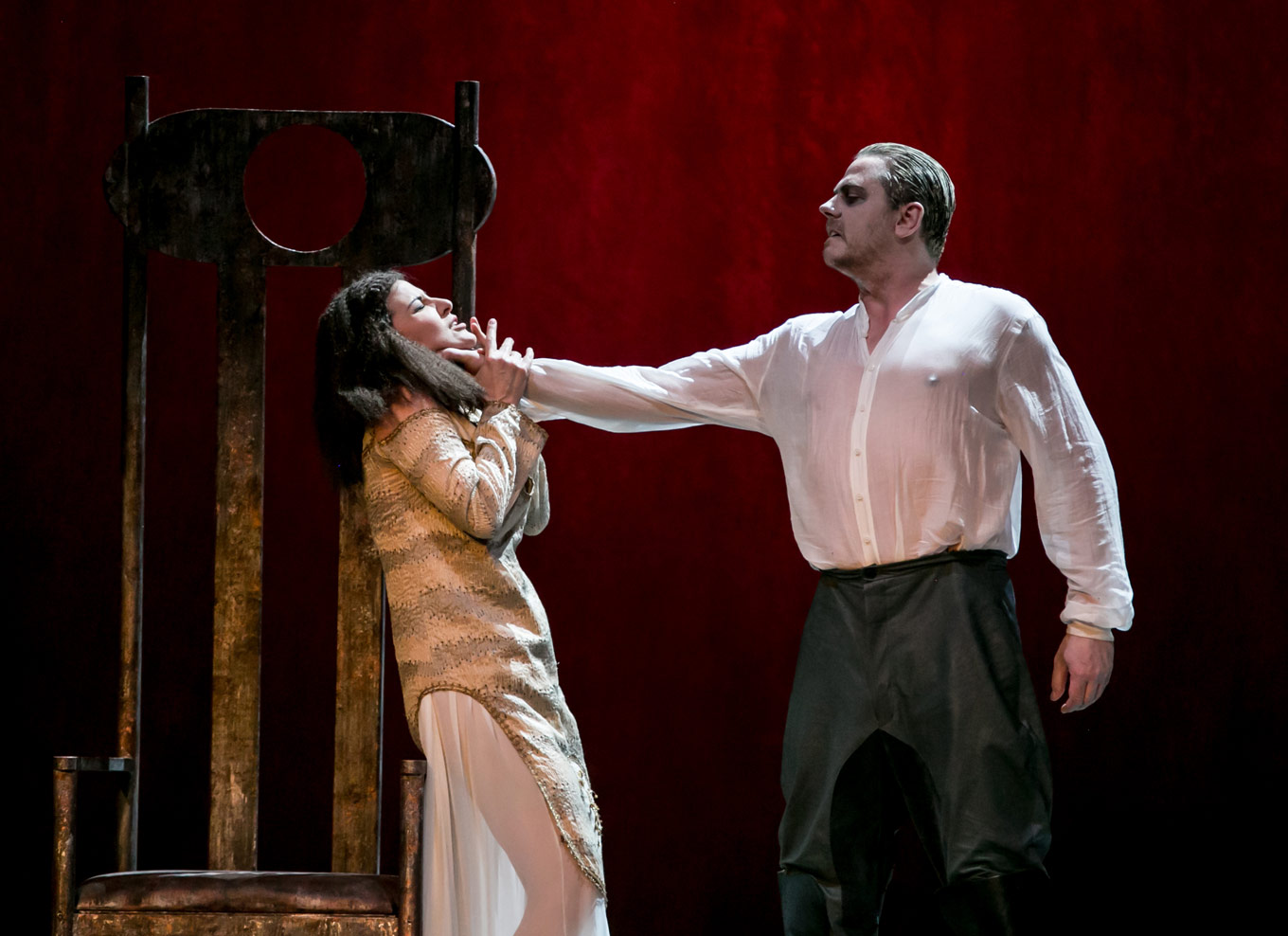
A lopsided & bloody double-bill at Hackney Empire
ReviewEvery trip to the Hackney Empire is an experience; I’m always surprised that the building manages to be equal parts kitschy and elegant. The space also has a surprisingly wonderful acoustic as well as clear sight lines and a big stage. It’s wonderful for opera, although it doesn’t have an orchestra pit.
Peter Eötvös and the Pannon Philharmonic chose to deal with that particular problem in a unique way: they took out most of the stall level seats and put in their 70-piece orchestra instead. It was wonderful to hear this Hungarian orchestra play such dynamic, spectacular music. This unusual set up made for a wonderful clarity of sound from an already warm orchestra. I was worried it would cover the singers during the shows, but for the most part this was handled very carefully without sacrificing orchestral power or vocal safety.

The evening started with Eötvös’ one-act Senza Sangue, which was conceived to be a partner piece for Bluebeard’s Castle. The music was lush and wonderfully transformed from one theme to another, setting the stage for a dramatic story about revenge and trauma. It was easy to see the cleverly conceived dramatic structure and tension of the work, however this reviewer did not feel that the production really served the music. The set and lighting design was so sparse as to be uninteresting - it looked almost unplanned. There was also confusion as to the costuming of the characters, particularly The Man, who was supposed to be 72 but looked like a young healthy baritone. The action on stage was also a bit stunted - it was hard to tell whether it was under-rehearsed or oddly staged.

However, it was easy to hear the dynamism and energy in Eötvös’ scoring, particularly in the long solo scene delivered by Albane Carrère as The Woman. Her voice was rich and warm and she transmitted all the nervous energy of the character with grace and confidence.

The second piece of the programme was Bartók’s staggering Bluebeard’s Castle. Bluebeard’s lush mystery couldn’t have provided a stronger contrast to tense grey world of Senza Sangue. This production too began with a bare stage, but through the brilliant lighting design of Philippe Grosperrin, each of Bluebeard’s seven forbidden rooms came to light. The singers performed brilliantly - Adrienn Miksch was a fierce and tempestuous Judith and sang with a remarkable warmth and versatility of tone. Bálint Szabó was wonderful on stage - a commanding yet tender Bluebeard with a steely and powerful voice. This production was a joy to witness and the orchestra (led by Eötvös) played with warmth and precision, supporting the singers and setting the richly coloured world for the show.

Seeing these two pieces back to back was an interesting experience. Though I did enjoy Eötvös’ new work, I’m not convinced by them as a pair. Senza Sangue seemed overly literal and concrete in contrast to the otherworldly symbolism of Bartók’s creation. I did, however, really enjoy the evening - it was wonderful to see these shows as a part of their international tour.


Comments